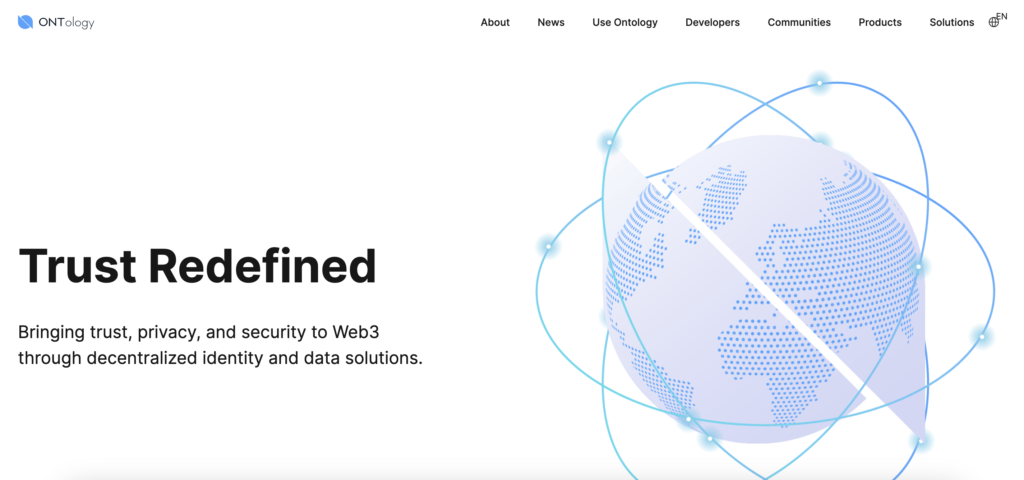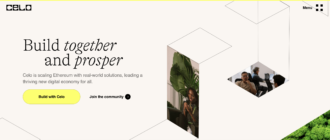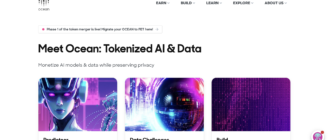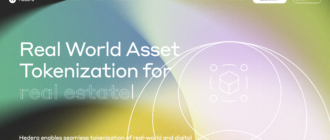In this article, we will delve into Ontology Gas (ONG), a crucial component of the Ontology blockchain ecosystem. Our exploration will cover the project’s background, technological framework, tokenomics, and ecosystem. We will also examine the growth prospects and future development forecasts for Ontology Gas. Through a detailed analysis, we aim to provide a comprehensive understanding of how ONG operates and its significance within the broader Ontology project.

What is Ontology Gas (ONG)?
Ontology Gas (ONG) is a utility token integral to the Ontology blockchain, a high-performance, open-source blockchain designed to support digital identity and data management. ONG is specifically used to pay for transaction fees and computational services within the Ontology ecosystem. Ontology employs a dual-token model where Ontology (ONT) serves as the staking token, while ONG is generated as a reward for staking ONT and is used for on-chain operations. This separation helps stabilize transaction costs by isolating the value fluctuations of the ONT asset from the fees required for network transactions. Ontology’s infrastructure aims to facilitate secure and efficient identity verification, data sharing, and collaboration across various decentralized applications (dApps).
Project History
Ontology was launched in 2018 as a project designed to address the need for secure identity verification and data sharing in the blockchain space. It was developed by a team of experts in blockchain technology and data security, aiming to create a robust platform for decentralized identity solutions. Key milestones in the project’s development include:
- 2018: Ontology’s mainnet goes live, marking the official launch of the Ontology blockchain and the introduction of the ONT and ONG tokens.
- 2019: The project introduces ONT ID, a decentralized identity application, and DDXF, a decentralized data exchange framework, enhancing the utility and application of the Ontology network.
- 2020: Ontology announces partnerships and integrations with various blockchain and technology firms, expanding its ecosystem and use cases.
- 2021: Significant upgrades to the network’s infrastructure improve cross-chain interoperability and Layer 2 scalability, reinforcing Ontology’s capability to support a wide range of dApps.
- 2022-2023: Continuous development and enhancements, including the integration of advanced consensus mechanisms and further expansion of the Ontology ecosystem, maintain its position as a key player in blockchain-based identity and data solutions.
How Ontology Gas (ONG) Works
Ontology Gas (ONG) operates within the Ontology blockchain ecosystem, leveraging advanced blockchain technologies to facilitate secure and efficient digital identity verification and data management. The project distinguishes itself with a dual-token model, robust cross-chain collaboration capabilities, and a focus on decentralized identity solutions.
Underlying Technologies
Ontology employs a multi-layered infrastructure designed to provide high scalability, security, and flexibility. The key technological components of Ontology include:
- Ontology ID (ONT ID): A decentralized identity application that allows users to create, manage, and use their digital identities securely across multiple platforms. It integrates with various applications, enhancing security and trust.
- Decentralized Data Exchange Framework (DDXF): A protocol enabling secure and efficient data exchange and collaboration. This framework ensures that data can be shared and monetized without compromising privacy or security.
Ontology Blockchain
The Ontology blockchain is a high-performance, open-source platform that supports various business needs through its modular architecture. It provides:
- Cross-Chain Interoperability: Ontology’s blockchain supports seamless cross-chain transactions and communication, allowing it to interact with other blockchains and expand its ecosystem’s reach and utility.
- Layer 2 Scalability: By utilizing Layer 2 solutions, Ontology enhances its transaction throughput and reduces latency, making it suitable for a wide range of decentralized applications (dApps).
Consensus Mechanism
Ontology utilizes a hybrid consensus mechanism known as the Ontorand Consensus Engine (OCE), which combines several advanced techniques:
- Verifiable Byzantine Fault Tolerance (VBFT): A novel consensus algorithm that integrates elements of Proof-of-Stake (PoS), Verifiable Random Function (VRF), and Byzantine Fault Tolerance (BFT). This combination ensures high security, scalability, and decentralization.
- Proof-of-Stake (PoS): Participants in the network stake ONT tokens to participate in the consensus process, incentivizing honest behavior and securing the network.
- Verifiable Random Function (VRF): Used to achieve randomness in the selection of consensus nodes, reducing the likelihood of any single entity controlling the network.
- Byzantine Fault Tolerance (BFT): Ensures that the network can reach consensus even in the presence of malicious nodes, enhancing overall security and reliability.
Unique Features
Ontology sets itself apart from other blockchain projects through several key features:
- Dual-Token Model: By separating the utility and governance functions into ONT and ONG tokens, Ontology minimizes the volatility of transaction fees and provides a stable operational environment.
- Focus on Digital Identity: Ontology’s strong emphasis on decentralized identity solutions, through ONT ID, addresses critical issues of privacy, security, and data sovereignty, which are often overlooked in other blockchain projects.
- Comprehensive Ecosystem: The Ontology ecosystem includes a variety of tools and services, such as the ONTO Wallet, which integrates with ONT ID and facilitates seamless interactions within the blockchain.
Ontology Gas (ONG) plays a crucial role in this ecosystem, enabling transaction processing, rewarding participants, and anchoring value within the network. Its sophisticated technological foundation and strategic focus on identity and data management make it a significant player in the blockchain space.
Tokenomics of Ontology Gas (ONG)
Ontology Gas (ONG) is a utility token within the Ontology blockchain ecosystem. Unlike a coin, which operates on its own native blockchain (such as Bitcoin or Ethereum), a token like ONG operates on top of an existing blockchain infrastructure—in this case, the Ontology blockchain.
Token vs. Coin
To clarify, ONG is a token rather than a coin. This distinction is important because tokens typically rely on an existing blockchain for their operation and security. ONG, as a utility token, is used primarily to pay for transaction fees and computational services within the Ontology network.
Emission Model
Ontology employs a dual-token model comprising ONT (Ontology) and ONG (Ontology Gas). This model is designed to separate governance and utility functions, minimizing volatility in transaction costs. Here’s a detailed look at the emission model for ONG:
- Total Supply: The maximum supply of ONG is capped at 1 billion tokens.
- Circulating Supply: As of the latest data, there are approximately 378.13 million ONG tokens in circulation.
- Generation Mechanism: ONG is generated as a reward for staking ONT. When ONT is staked, it periodically releases ONG, which can then be used to pay for transaction fees and other on-chain services.
- Emission Rate: The emission rate of ONG decreases over time, designed to reduce inflationary pressures and ensure long-term value stability.
Pricing and Market Performance
The value of ONG is influenced by network usage, overall market conditions, and demand for transaction processing within the Ontology ecosystem. Here are some key facts about ONG’s market performance:
- Current Price: As of the most recent data, ONG is trading at approximately $0.51 per token.
- Market Capitalization: The market cap of ONG stands at around $208 million, reflecting its total circulating supply multiplied by its current price.
- Trading Volume: Over the past 24 hours, the trading volume for ONG has been approximately $23.72 million, indicating a healthy level of liquidity and market activity.
Distribution and Utility
- Transaction Fees: ONG is used to pay for transaction fees on the Ontology blockchain. This includes fees for transferring assets, executing smart contracts, and other on-chain activities.
- Staking Rewards: By staking ONT, users earn ONG as a reward, incentivizing participation in the network’s security and governance processes.
- Application Usage: ONG is also used within various decentralized applications (dApps) built on the Ontology platform, further integrating it into the ecosystem and driving demand.
Unique Economic Model
The dual-token model of Ontology, with ONT for staking and governance and ONG for transaction fees and utility, helps stabilize the network and reduce volatility. This model ensures that users and developers can interact with the blockchain efficiently without being subjected to the price fluctuations typically associated with a single-token system.
Ontology Gas (ONG) thus serves as the lifeblood of the Ontology blockchain, facilitating essential operations and driving the ecosystem’s economic activities. Its carefully designed emission model and dual-token approach provide a robust framework for sustainable growth and long-term value appreciation.
Where to Buy ONG
Ontology Gas (ONG) is available for trading on several major cryptocurrency exchanges. Here is a list of exchanges where you can buy ONG:
- Binance: One of the largest and most popular cryptocurrency exchanges in the world. It offers a wide range of trading pairs and high liquidity for ONG.
- Gate.io: A well-established exchange known for its strong security measures and wide variety of listed cryptocurrencies.
- MEXC: A global cryptocurrency exchange that provides a wide range of digital assets, including ONG.
- Bitget: Known for its user-friendly interface and extensive selection of cryptocurrencies, including ONG.
To purchase ONG, you need to create an account on one of these exchanges, complete the verification process, and deposit funds (either fiat currency or other cryptocurrencies). Once your account is funded, you can place an order to buy ONG using the available trading pairs.
Where to Store Ontology Gas (ONG)
Storing your ONG securely is crucial to protect your assets. Here are some recommended wallets for storing ONG:
- ONTO Wallet: The native wallet of the Ontology ecosystem, designed specifically for storing ONT and ONG. It supports multiple digital assets and provides features such as identity management, staking, and governance participation.
- Ledger Nano S/X: A hardware wallet that offers the highest level of security by storing your private keys offline. It supports a wide range of cryptocurrencies, including ONG, and is compatible with various wallet applications.
- Trust Wallet: A mobile wallet that supports multiple cryptocurrencies and is known for its ease of use and robust security features. It allows you to store, manage, and trade ONG directly from your mobile device.
- Atomic Wallet: A decentralized wallet that supports over 500 cryptocurrencies, including ONG. It offers a user-friendly interface and additional features like atomic swaps and staking.
- Exodus Wallet: A desktop and mobile wallet that supports a wide range of cryptocurrencies. It is known for its intuitive interface and built-in exchange feature, allowing you to trade ONG directly within the wallet.
When choosing a wallet, consider factors such as security, ease of use, and additional features that may be important to you. Always ensure that you back up your wallet and keep your private keys secure.
Project Prospects of Ontology Gas (ONG)
Ontology Gas (ONG) has a promising future, driven by its robust technological foundation, strategic partnerships, and growing adoption in various industries. The project’s growth is anchored on several key factors, including technological advancements, expanding use cases, and a strong ecosystem.
Basis for Growth
The growth of Ontology Gas is based on its unique approach to solving critical issues in digital identity verification and data management. By providing a high-performance blockchain with advanced cross-chain interoperability and Layer 2 scalability, Ontology attracts a diverse range of users and developers. The dual-token model, separating governance and utility functions between ONT and ONG, offers stability and efficiency in transactions, further enhancing its appeal.
Clients and Partners
Ontology has formed strategic partnerships with numerous organizations to expand its reach and applications. Key partners and clients include:
- Microsoft: Collaboration on decentralized identity solutions.
- Google Cloud: Integration for enhanced cloud-based blockchain services.
- Huawei: Partnership for blockchain solutions in telecommunications.
- Deloitte: Cooperation on blockchain applications in auditing and consulting.
- Chainlink: Integration of decentralized oracle services to enhance smart contract functionality.
These partnerships not only validate Ontology’s technology but also help drive its adoption across various sectors.
Development Forecast
The future development of Ontology Gas looks bright, with several key trends and predictions shaping its trajectory:
- Increased Adoption: As more businesses and developers adopt Ontology’s blockchain for decentralized identity and data management, the demand for ONG is expected to rise.
- Technological Enhancements: Continued upgrades to Ontology’s infrastructure, including enhanced cross-chain capabilities and improved consensus mechanisms, will likely attract more users and developers.
- Ecosystem Expansion: The growth of the Ontology ecosystem, with more dApps and services integrating ONG, will further solidify its position in the blockchain space.
- Regulatory Environment: As regulatory frameworks for digital identities and blockchain technology mature, Ontology’s compliance and alignment with these regulations will be crucial for its sustained growth.
Ecosystem
Ontology’s ecosystem is comprehensive and continues to expand, offering a wide range of tools and services that enhance its utility and adoption. Key components of the Ontology ecosystem include:
- ONT ID: A decentralized identity solution that allows users to create and manage digital identities securely.
- ONTO Wallet: A multi-functional wallet that supports ONT, ONG, and other digital assets, providing features such as staking, governance participation, and seamless asset management.
- DDXF (Decentralized Data Exchange Framework): A protocol designed to facilitate secure and efficient data exchange and collaboration, ensuring data privacy and integrity.
- Wing Finance: A decentralized finance (DeFi) platform built on Ontology, offering various financial services such as lending, borrowing, and insurance.
- SAGA: A decentralized gaming platform that leverages Ontology’s blockchain to provide secure and transparent gaming experiences.
The Ontology ecosystem is designed to be scalable and interoperable, enabling seamless integration with other blockchains and platforms. This flexibility and robustness position Ontology Gas (ONG) as a key player in the evolving blockchain landscape, poised for continued growth and innovation.
Conclusion
Ontology Gas (ONG) plays a pivotal role in the Ontology blockchain ecosystem by serving as the utility token for transaction fees and other on-chain operations. The dual-token model of Ontology, featuring both ONT and ONG, is designed to stabilize transaction costs and enhance network efficiency. As the Ontology ecosystem evolves, the functionality and demand for ONG are likely to grow, driven by the increasing adoption of decentralized applications and identity solutions built on the platform. This analysis underscores the potential of ONG as a significant player in the blockchain space, offering both utility and value to its users and investors.






